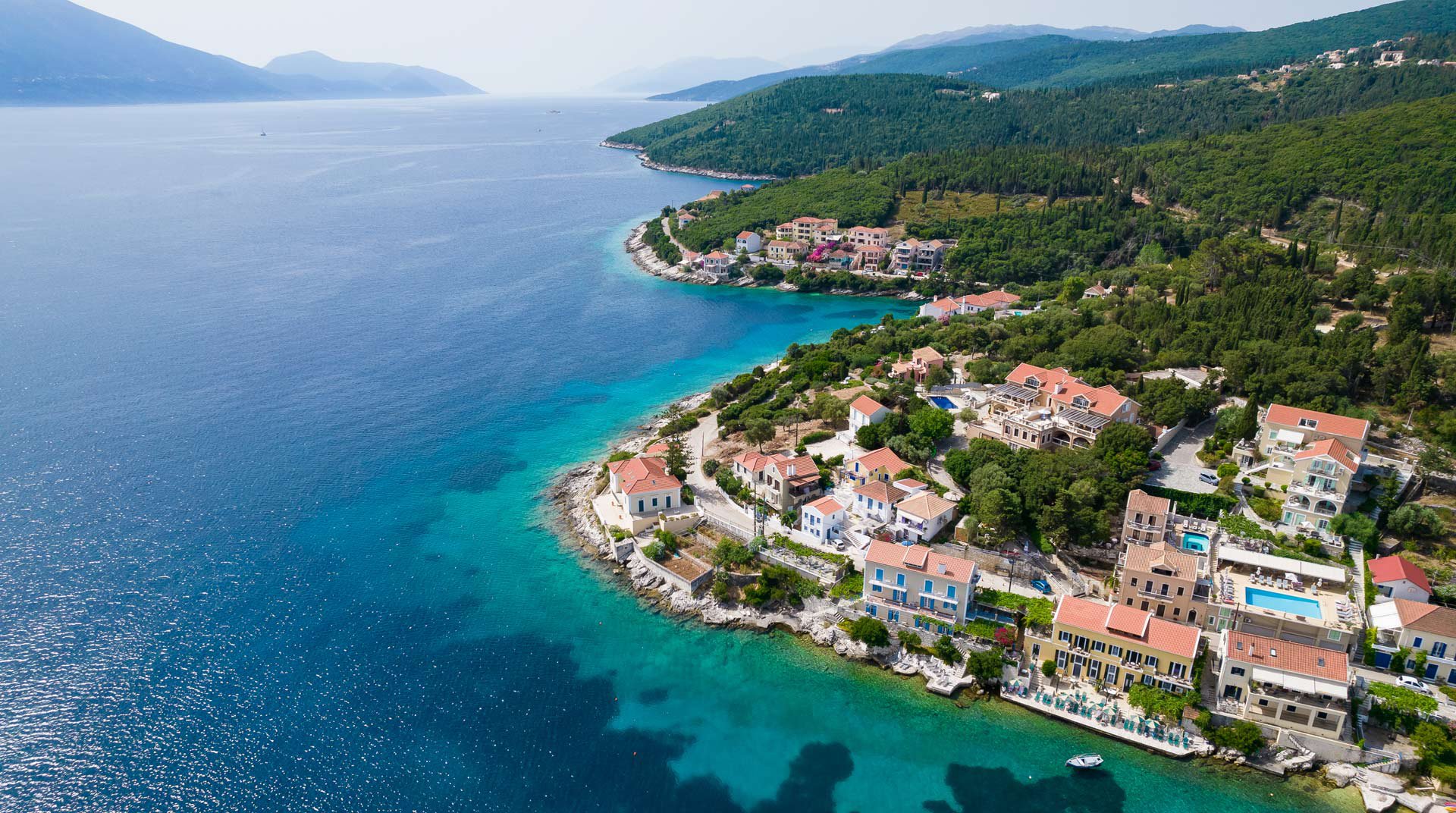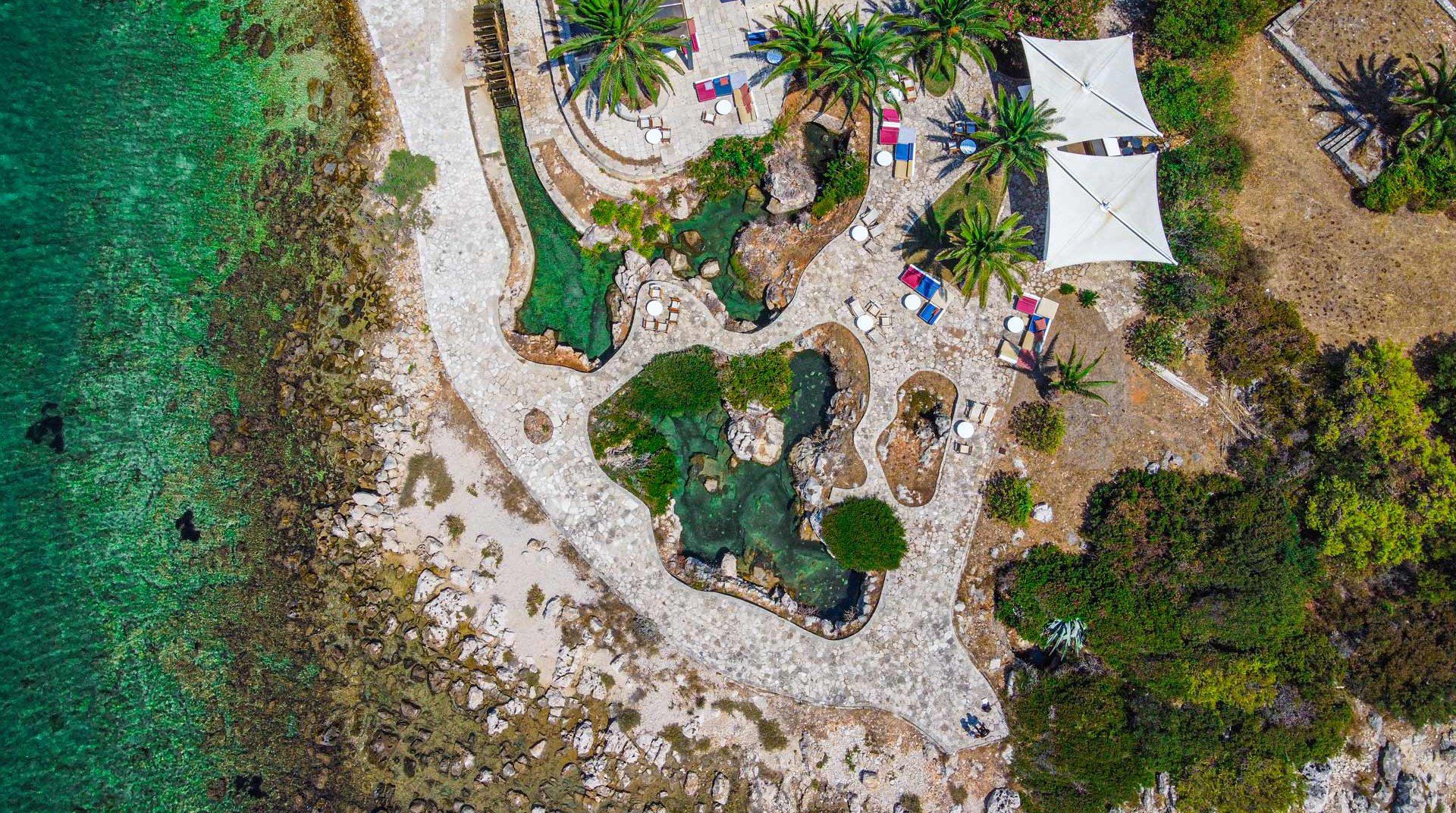DISCOVER
SIGHTS
Apart from the unparalleled beauty of its beaches, Kefalonia gives everyone who visits the island the opportunity to explore and admire what nature can create over time. Visit the extremely rare phenomena on the island, such as the Sinkholes of Argostoli or the magnificent Drogarati Cave. Admire the marine wetlands, a refuge for rare species of fauna found on the island, and tour the Fiskardo Marine and Environmental Museum, where you will be impressed by the rare and unique findings and collections exhibited in the museum.
Kefalonia has much to offer in the field of culture. Remarkable monuments have been preserved for centuries and have survived thousands of years, even from the devastating earthquake that hit the island in 1953. A visit to the Archaeological Museum is a journey through time as findings and sources that have survived from antiquity are exhibited and are characteristic samples of the island's long history. Wander through the Venetian period with a visit to the Museum of the Assos Castle, an excellent example of 16th-century military architecture. The Lighthouse of Agioi Theodoroi in Argostoli an impressive and imposing building that will enchant you.

MUSEUM OF THE ASSOS CASTLE IN KEFALONIA
The Assos Castle was an impregnable fortress built in the 16th century under the Venetian administration of the island. It is located on the peninsula of Assos, in the northwestern part of the municipality of Erissos. It was built to protect the then capital of the island from raids and attacks. Despite the devastating earthquake that struck the island in 1953, the castle is maintained in excellent condition and allows the visitor to admire the battlements, the watchtowers, the towers, and parts of the long walls that stand proud and resist the ravages of time!

DROGARATI CAVE
Drogarati Cave is located in the area of Sami, on the east coast of the island. It is an attraction for visitors to the island and undoubtedly an impressive sight for those who choose to explore it. Its discovery took place about 300 years ago, while the formation of stalagmites and stalactites began a hundred million years ago. The cave reaches a depth of 95 meters, and its temperature is up to 18o Celsius. The fact that the cave remains "alive" is a very impressive sight for the visitor. Even today, the stalactites are still being created and growing.

ARCHAEOLOGICAL MUSEUM
Travel through time and the island's long history with a visit to the Archaeological Museum of Argostoli. In the three large halls of the museum, the visitor can admire exhibits from the Stone Age to the Late Roman Empire that were recovered from the excavations carried out throughout the island, bringing to remarkable light findings, evidence of the long history of the island. Tools of the Stone Age, gold coins of the Mycenaean period, and findings from the Kefalonian tetrapolis of the 5th century are a sample of what a visitor can admire.

LIGHTHOUSE OF AGIOI THEODOROI
In Lassi, near Argostoli, is the imposing Lighthouse of Agioi Theodoroi, an impressive architectural structure built by the British during the British occupation of the island. A circular construction with twenty columns around the perimeter and an eight-meter height stands out for its imposing nature. Its simple Doric rhythm and its particular architectural style make it stand out. The Lighthouse of Agioi Theodoroi was initially built in 1828 by the British administrator Charles Napier, then governor of the island was destroyed by the 1953 earthquake and rebuilt according to the original standards.

SINKHOLES OF ARGOSTOLI
One of the rarest and most impressive geological "mysteries", which have occupied the international scientific community and should not be missed by visitors to the island, is the famous Sinkholes in Argostoli. At the tip of the peninsula, in an almost magical way, the sea penetrates the land and flows into sinkholes (forms of conduit that end in an opening in the ground), causing the seawater to flow through cracks in the rocks of the coast and disappear underground! Research has shown that the water that magically disappears crosses the entire southern part of the island underground to reach Melissani Cave.





